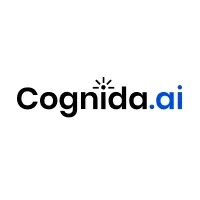Science in the modern world has no borders to cross. As a result of cloud-based platforms, researchers from across the globe have compiled data, tools, methods, and results as if all are in the same laboratory. This new model for collaborative research is not only democratizing science but is already speeding up discoveries that might have been undertaken over years or decades in traditional laboratories. Cloud technology has risen to eliminate previously existing barriers between scientific brains and is now recasting how a global scale is being researched.
Sciences and International Relations The Globalisation of Sciences
Science is a communal activity, so it symbolizes and depends on collaboration. This may maybe because the nature of modern scientific problems is complex and needs solutions that are only possessed by some individuals or institutions. From understanding climate change, finding cures to new diseases, or inventing innovative technologies, the best solutions are knowledge that comes from various disciplines. Earlier methods of conduct of study where research scientists operated independently have been proven to be unproductive. To achieve the maximum possible outcomes of scientific investigations, cooperation is crucial—and the cloud allows it to be made.
What is Cloud-Based Research Collaboration?
Cloud computing refers to storing, managing, and processing data on remote servers accessed online rather than on local systems. For researchers, cloud platforms provide access to enormous computing power and storage capacity and a suite of tools and services that streamline data analysis, sharing, and project management.
Cloud-based research collaboration allows multiple scientists to work on the same datasets, share software, and use complex algorithms without needing expensive hardware or physical proximity. Platforms such as Google Cloud, Microsoft Azure, Amazon Web Services, and specialized research tools like IBM’s Science Hub or the open-source Galaxy Project provide infrastructures tailored for scientific research. These cloud services allow researchers to not only store data but to analyze it collaboratively, sharing findings and methodologies in real-time.
Breaking Down Borders: A New Frontier in Science
Governance issues of science are geographical location, data accessibility, funding resources, and institutional structures, and cloud-based tools face all the issues. Here’s how cloud computing is breaking down these borders:
1. Geographical Borders: The use of cloud platforms ensures that scientists can work on the same project at various times in the day, on different continents, and at different institutions. A researcher in Kenya can be equally privileged to the same dataset and analysis tools as the researcher in the U.S.A. or Japan. This allows what can be described as actual international cooperation for researchers to be able to break geographical barriers with real-time interaction.
2. Resource Sharing: Cloud computing leverages strategies that would otherwise be very costly for most of researchers. Supercomputing, artificial intelligence analysis, and storage capacity are no longer preserved by big-budget institutions. It has special significance to those researchers in developing countries, which means they can join the best-informed scholars in state-of-the-art (consummate) studies without overstraining their financial capabilities to establish upscale research facilities.
3. Interdisciplinary Collaboration: Some clouds allow multiple disciplines into the platform making it easier for faculties from disciplines such as biology, computer science, environmental sciences, and engineering disciplines to collaborate. In the design of spaces that integrate different disciplinary practices, interdisciplinary collaborations promoted by cloud-based research enhance the creation of novelty that can only emerge from multiple practices.
4. Open Data and Transparency: Most cloud platforms retain the openness of published information through the sharing of research data and results of the research into the public domain. This is especially important for transparency because it checks the results coming up in a study, provides directions for additional investigations, and enables others to develop on the initial research. More openness at this level helps to build stakeholders and public confidence, especially in areas where their findings directly influence policy, health, and safety.
Benefits of Cloud-Based Collaboration in Research
The shift toward cloud-based collaboration offers profound benefits for scientific progress:
- Speeding Up Discoveries: Cloud metrics are even shorter than a traditional research timeline as data sharing, data analysis, and feedback are integrated. Since research data can be shuttled into a central place for access and analysis in a matter of minutes, rather than weeks or months, the speed of discovery is enhanced considerably.
- Scalability: In cloud platforms, researchers can obtain large amounts of computation power and then limit it as per their project requirement. This flexibility lets scientists solve problems that need much computation power while avoiding high fixed computation costs.
- Enhanced Security: Nevertheless, researchers have raised legitimate questions about the safety of data in the cloud, leaders in cloud storage spend a great deal of money in best-in-class security solutions for research data. This guarantees the privacy of the information regarding ownership or health concerns of patients which relevant stakeholders can access in the project.
- Cost Efficiency: Instead of developing of their instruments, which can be very expensive, individual institutions can use cloud services and get powerful tools for a reasonable price to obtain results of their work.
Challenges and Considerations in Cloud-Based Research
As much as there are advantages to the cloud, there are also various disadvantages associated with it. Data security and privacy are essential, especially when working with some specific and especially personal data. That is why researchers need to follow the guidelines of the usage and storage of data set by crucial data acts such as GDPR in Europe or the HIPAA Act in the United States.
Furthermore, cloud computing needs an additional internet connection that may pose challenges for researchers in areas with a weak internet connection. To overcome this problem, there is a need to allocate funds to develop the World Wide Web, mainly in the unserved regions.
Finally, cloud-based research embraces conformity to standard data format and methodology for collaboration. This causes a lot of interference with attempts or making the research work to develop a standard workflow that would suit all research teams. Overcoming these challenges will be essential to improving the degree of cloud-based research organization.
Moving The Future of Science In the Cloud
There is much potential in cloud-based research as we look into the future. Over time cloud technology is set to advance where researchers have access to enhanced tool sets, enhanced security, and other conveniences for collaboration. Machine learning and AI being major fields are expected to take up more space in the future. They should give even more tools for automated data analysis and patterns, which probably would unlock entirely new and previously unimagined research areas.
Moreover, as the principles of open science are gradually being implemented more actively, cloud environments will shift to the general setting for data sharing and cooperation. This shift looks to revolutionize scientific writing as users deposit data and methods in the public domain rather than relying on print journals.
Conclusion: Redefining Boundaries in Science
Cloud technology is not only transforming how we conduct science—it’s redefining what’s achievable. Cloud-based collaboration enables global knowledge-sharing and rapid discovery by breaking down geographical, financial, and institutional barriers.



















Comment
Collaborative research in the cloud is breaking traditional barriers in science, enabling global teams to work seamlessly on data-intensive projects. This shift not only accelerates innovation but also enhances the accessibility of resources, democratizing research for all. The future of science is truly borderless.